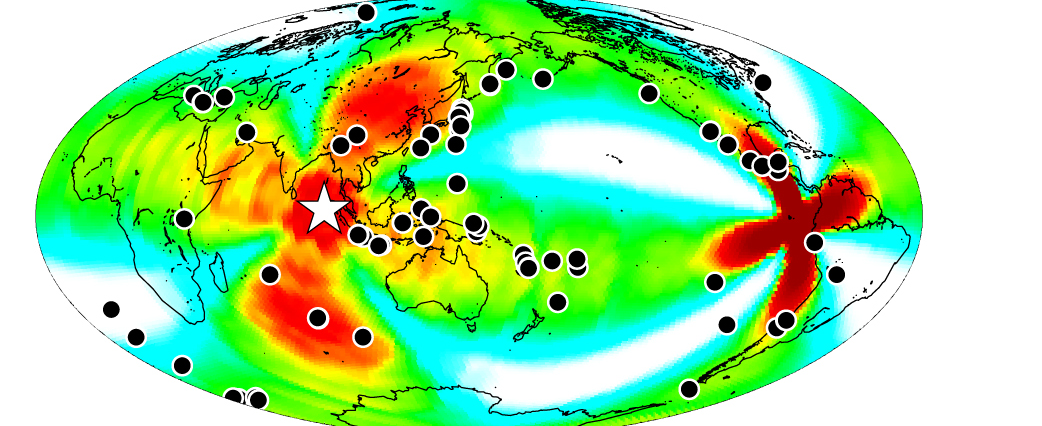New Scientist
Image: Fred Pollitz
You may not have felt it, but the whole world shuddered on 11 April, as Earth’s crust began the difficult process of breaking a tectonic plate. When two huge earthquakes ripped through the floor of the Indian Ocean, they triggered large aftershocks on faults the world over, and provided the best evidence yet that the vast Indo-Australian plate is being torn in two.
Geologists have spent five months puzzling over the twin quakes – of magnitude 8.6 and 8.2 – which took place off the coast of North Sumatra. Events that large normally occur at the boundary between tectonic plates, where one chunk of Earth’s crust slides beneath another, but these were more than 100 kilometres from such a subduction zone. What’s more, both involved rocks grinding past each other sideways with very little vertical movement – what geologists call strike-slip earthquakes. Yet strike-slip quakes this large had never been reported before.
Matthias Delescluse at the École Normale Supérieure in Paris, France, and his colleagues have an explanation. They analysed quakes in the area since December 2004, when a magnitude-9.1 quake in a subduction zone near Sumatra triggered a devastating tsunami. They found earthquakes during this period were nearly 10 times more frequent compared with the previous eight years. What’s more, 26 of the quakes that happened between December 2004 and April 2011 were similar to the 11 April quakes in that they involved rocks being pushed and pulled in the same directions. Read more on newscientist.com…








